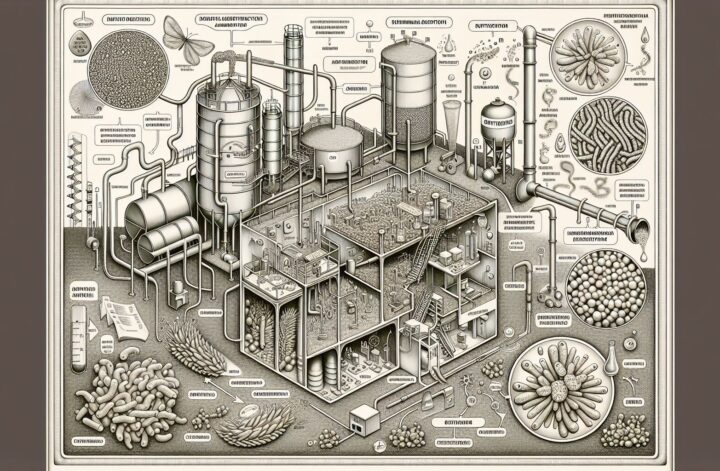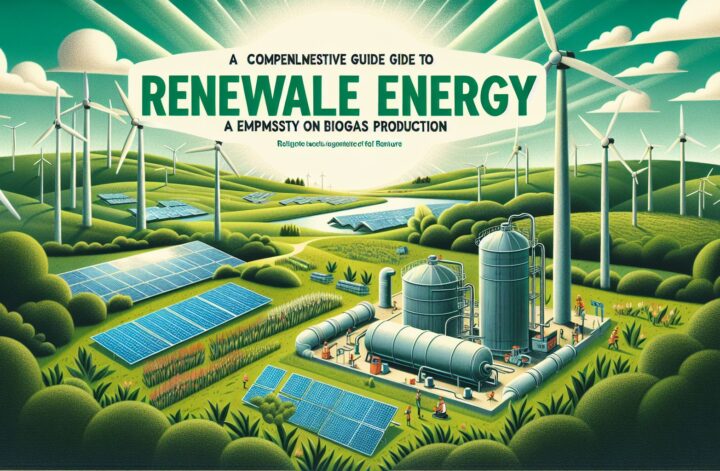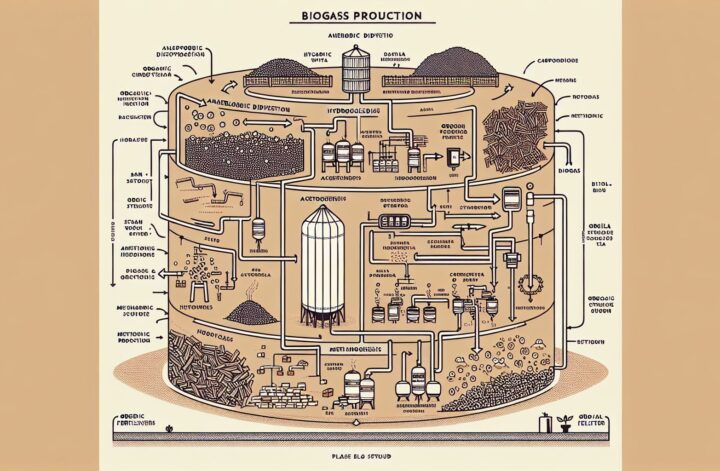The concept of waste management has been given a new dimension in recent years as an integral part of renewable energy production. One such innovative method is the high-rate anaerobic digestion process. This method provides effective waste stabilization and energy generation with less footprint. This article focuses on exploring the high-rate anaerobic digestion process, its working guidelines, benefits, and applications in the context of renewable energy production.
Understanding High-Rate Anaerobic Digestion
High-rate anaerobic digestion is a biological treatment process that breaks down organic materials in the absence of oxygen. The distinctive feature of this process compared to regular anaerobic digestion is the use of specialized microbial communities and technology to speed up the process [^1^]. It offers a higher organic loading rate (OLR), reducing hydraulic and solid retention times, improving efficiency, and permitting centralized waste processing.
Process of High-Rate Anaerobic Digestion
A high-rate anaerobic digestion process occurs in four steps:
- Hydrolysis: The large organic compounds, such as proteins, carbohydrates, and fats are broken down into simpler forms: polysaccharides, proteoses, and peptones.
- Acidogenesis: Acid-forming bacteria convert these simpler organic compounds into volatile fatty acids, along with alcohols, H2, and CO2.
- Acetogenesis: Acetic acid, H2, and CO2 are produced by the conversion of fatty acids and alcohols.
- Methanogenesis: Methane-producing bacteria further break down the compounds of the last step to produce methane and CO2. This final step is highly sensitive to changes in temperature, pH, and toxic compounds.
Benefits and Applications
Harnessing Energy: Biogas Production & Upgrading
One of the substantial benefits of the high-rate anaerobic digestion process is biogas production. Biogas, consisting mainly of methane and carbon dioxide, can be used as a fuel source for electricity and heat generation, known as Combined Heat and Power (CHP). In addition, after undergoing a biogas upgrading process, which involves removing impurities and increasing the concentration of methane, it can also be used as natural gas [^2^].
Co-Digestion and Waste Management
The high-rate anaerobic digestion process also opens possibilities for co-digestion – the simultaneous digestion of multiple types of organic waste. This can significantly increase the yield of biogas and offer an effective solution for managing different types of organic waste at once.
Digestate Management: Biosolids
Another crucial aspect of this process is digestate management. The solid residue left after digestion, known as digestate, can be further processed to yield biosolids, a resource-rich organic material with numerous agricultural applications.
Challenges & Solutions
Water content is critical for any anaerobic digestion to occur. However, overloading with water can inhibit the process. Efficient design to prevent any clogging and inhibit the formation of biogas bubbles is prerequisite for high-rate digestion systems. In addition, factors such as pH, temperature, and toxicity levels of compounds like ammonia and sulfides need to be monitored and controlled to steer the microbial processes in the desired direction [^3^].
To maximizing productivity, the configuration of the digesters plays a crucial role. The Upflow Anaerobic Sludge Blanket (UASB) and the Expanded Granular Sludge Bed (EGSB) reactors are the most used for high-rate digestion.
Conclusion
High-rate anaerobic digestion proves to be a robust sustainable energy technology. With its capability of potentiating renewable energy production and offering staggeringly effective waste management solutions, the challenges it poses are worth dealing with. With continual advancements in this field, we can expect better waste management and renewable energy solutions thereby promoting cleaner ecosystems.
[^1^]: Batstone, D. J., & Virdis, B. (2014). The role of anaerobic digestion in the emerging energy economy. Current Opinion in Biotechnology, 27, 142-149.
[^2^]: Wellinger, A., Murphy, J., & Baxter, D. (2013). The Biogas Handbook: Science, production and applications. Woodhead Publishing.
[^3^]: Nizami, A. S., & Murphy, J. D. (2010). What type of digester configurations should be employed to produce biomethane from grass silage? Renewable and Sustainable Energy Reviews, 14(9), 2788-2798.




